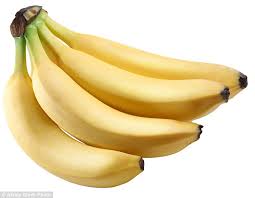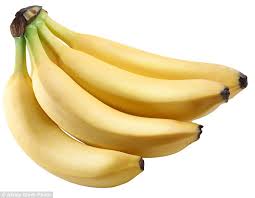
A deadly tropical disease that has impacted a number of crops across the globe can be the cause for the complete extinction of bananas, warn health experts and scientists. According to multiple reports published for some time now, incidents of the disease – known as the Panama disease, have been reported form various regions of the world including Africa, Asia, Australia, the Middle East, and Central America
According to concerns of scientists and researchers, the Cavendish banana, which is the most consumed banana worldwide, could face potential extinction if the Panama disease manages to reach South America. Reports have also caused fears among farming the community because the disease has been found to be immune to various forms of chemical treatment and the only way to control the spread of the disease, caused by a fungus, is to completely quarantining the farmland that has been affected by it and remove all plants there. .
According to researchers, the chances of the Panama disease to spread among entire harvest fields of the Cavendish bananas is because these type of bananas are very similar to each other.
The United Kingdom alone consumes more than five billion Cavendish bananas every year. And it is also a favourite in the United States with an average import of the banana every year worth $2.2 billion over the last decade primarily from the exporters in Central and South America.
Among the solutions offered to save the bananas from the disease by researchers is in the form of the Madagascan tree. Unplantable, wild species of bananas are borne by the Madagascan tree and it is immune to the Panama disease. There are efforts underway to develop a hybrid of the two species of bananas so that the resultant plant is immune to the disease.
Reports quoting scientists say that globally, there are only five species of Madagascan trees currently exist.
The rare, disease-resistant species of the trees with certain characteristics makes it stronger than the Cavendish bananas, says senior conservation assessor at the Royal Botanic Gardens, Richard Allen. The creation of a banana that has tolerance to disease and drought has been possible because of the climate on the island, says Allen. What makes the Madagascar banana completely different from the Cavendish variety of bananas is that the former grows seeds and does not taste even a fraction of what the later does. However a combination of the two species could result in a hybrid that would not only be disease resistant but also edible.
"We are hopeful that the work being done by scientists around the world to find a cure for the disease threatening the Cavendish banana will be successful," head gardener at Chatsworth, Steve Porter stated.
First emerging in 1990s, the Panama disease is one that is spread by a fungus and affects the roots of a banana tree. It first emerged in Panama and later spread to Central America. This fungus growth cannot be controlled by chemical treatment and one of the strains of the fungus is seen as a major threat to the Cavendish bananas.
(Source:www.techtimes.com)
According to concerns of scientists and researchers, the Cavendish banana, which is the most consumed banana worldwide, could face potential extinction if the Panama disease manages to reach South America. Reports have also caused fears among farming the community because the disease has been found to be immune to various forms of chemical treatment and the only way to control the spread of the disease, caused by a fungus, is to completely quarantining the farmland that has been affected by it and remove all plants there. .
According to researchers, the chances of the Panama disease to spread among entire harvest fields of the Cavendish bananas is because these type of bananas are very similar to each other.
The United Kingdom alone consumes more than five billion Cavendish bananas every year. And it is also a favourite in the United States with an average import of the banana every year worth $2.2 billion over the last decade primarily from the exporters in Central and South America.
Among the solutions offered to save the bananas from the disease by researchers is in the form of the Madagascan tree. Unplantable, wild species of bananas are borne by the Madagascan tree and it is immune to the Panama disease. There are efforts underway to develop a hybrid of the two species of bananas so that the resultant plant is immune to the disease.
Reports quoting scientists say that globally, there are only five species of Madagascan trees currently exist.
The rare, disease-resistant species of the trees with certain characteristics makes it stronger than the Cavendish bananas, says senior conservation assessor at the Royal Botanic Gardens, Richard Allen. The creation of a banana that has tolerance to disease and drought has been possible because of the climate on the island, says Allen. What makes the Madagascar banana completely different from the Cavendish variety of bananas is that the former grows seeds and does not taste even a fraction of what the later does. However a combination of the two species could result in a hybrid that would not only be disease resistant but also edible.
"We are hopeful that the work being done by scientists around the world to find a cure for the disease threatening the Cavendish banana will be successful," head gardener at Chatsworth, Steve Porter stated.
First emerging in 1990s, the Panama disease is one that is spread by a fungus and affects the roots of a banana tree. It first emerged in Panama and later spread to Central America. This fungus growth cannot be controlled by chemical treatment and one of the strains of the fungus is seen as a major threat to the Cavendish bananas.
(Source:www.techtimes.com)





